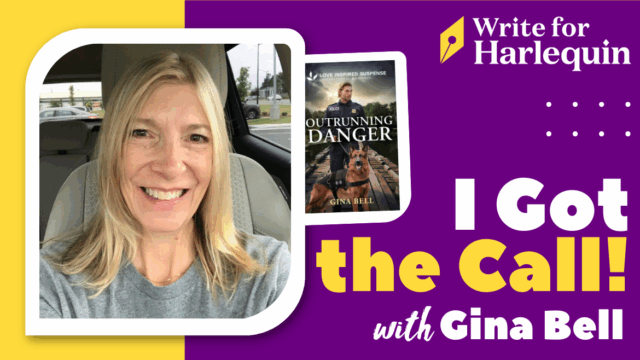
By editor Elena Lodge
The Dark Moment:
“This is the moment near the end of the story where the main characters’ issues come to a head, and the reader is left wondering how on earth they will ever find their happy-ever-after. Sometimes called the Third Act Crisis.”
It’s said, ‘When you know, you know.’ But for our heroes and heroines, a better phrase would be something a little more like, ‘You don’t know until you know.’ Because in a Harlequin romance, no love is true until it’s tested!
This ‘test’ is what we call the ‘third-act crisis’, or the dark moment. It’s the all-or-nothing, pivotal point at which the emotional tension between your main characters has reached an inescapable crescendo. Their relationship could go one of two ways: Happily-Ever-After, or… The End.
Of course, this is romance, so an unhappy ending is out of the question. But that doesn’t mean you can’t take your readers right to the brink first! Crafting the perfect crisis point is the sure-fire way to do this.
So, how do you nail your crisis point? Here’s a few top tips:
Sow the Seeds of Emotional Conflict:
The basis of your story is made of your central characters and their emotional arcs. Without a deep emotional conflict, your characters risk feeling two-dimensional, and they won’t have anything driving them away from their happy ending.
If you’ve not given your characters a strong emotional conflict, this will only become more obvious in the crisis point. Without the inner obstacles in their way, what motivates them to resist their attraction? The greater their internal barriers to love, the more satisfying their resolution will be—they’ve not only met their match but overcome their inner demons too!
To make sure you’ve hit the right level of emotion for a Harlequin story, sow the seeds of emotional conflict early. Then, think about how this would shape your hero and heroine’s view of the world, and allow this to show in their thoughts, words and actions leading up to the big moment!
Let the Emotional Conflicts Do the Heavy Lifting:
The good news is, if you’ve taken the time to establish and thread deep emotional conflicts through the story for each of your main characters, you’re mostly there. All there’s left to do is to take these emotional conflict threads and pull.
As their internal conflicts unravel, your heroes and heroines are forced to confront their deepest issues. Once they have, all barriers to love are lifted, and their one true love is theirs for the taking!
Avoid External Influences:
It’s tempting to lean on external influences, such as interference from secondary characters or a plot device like an accident, to put the crisis point in motion. But this isn’t necessary, and in fact will only stifle the impact of the emotional tension you’ve built to this point! To avoid this, focus on how your characters’ thoughts and feelings might bubble up on their own, and go from there!
Let Your Characters Take the Lead:
Whilst a lot of stories lend themselves to an explosive argument in the crisis point, this isn’t always the case! Consider the characters you have written. Are they more reserved, or uncomfortable in confrontation? If so, don’t be afraid to show it!
As it’s all driven from within, the crisis point should form around the heroes and heroines you have created. This far into the book, you’ll know them inside and out. Let them take the lead, and write what is true to their story!
Want more insight from True Love Towers?
Check out our Romance Glossary!




